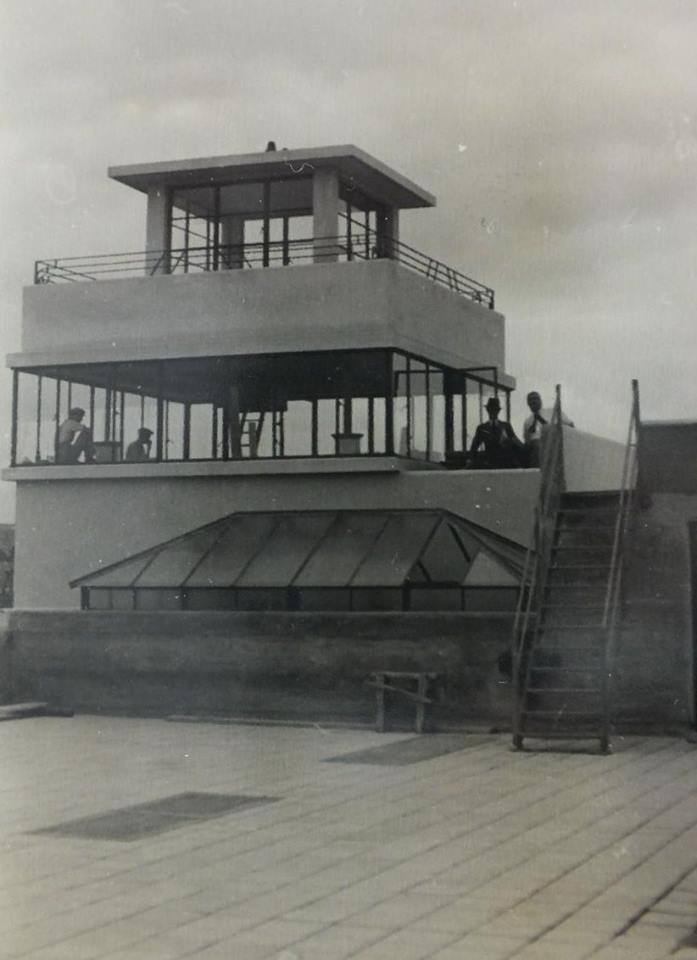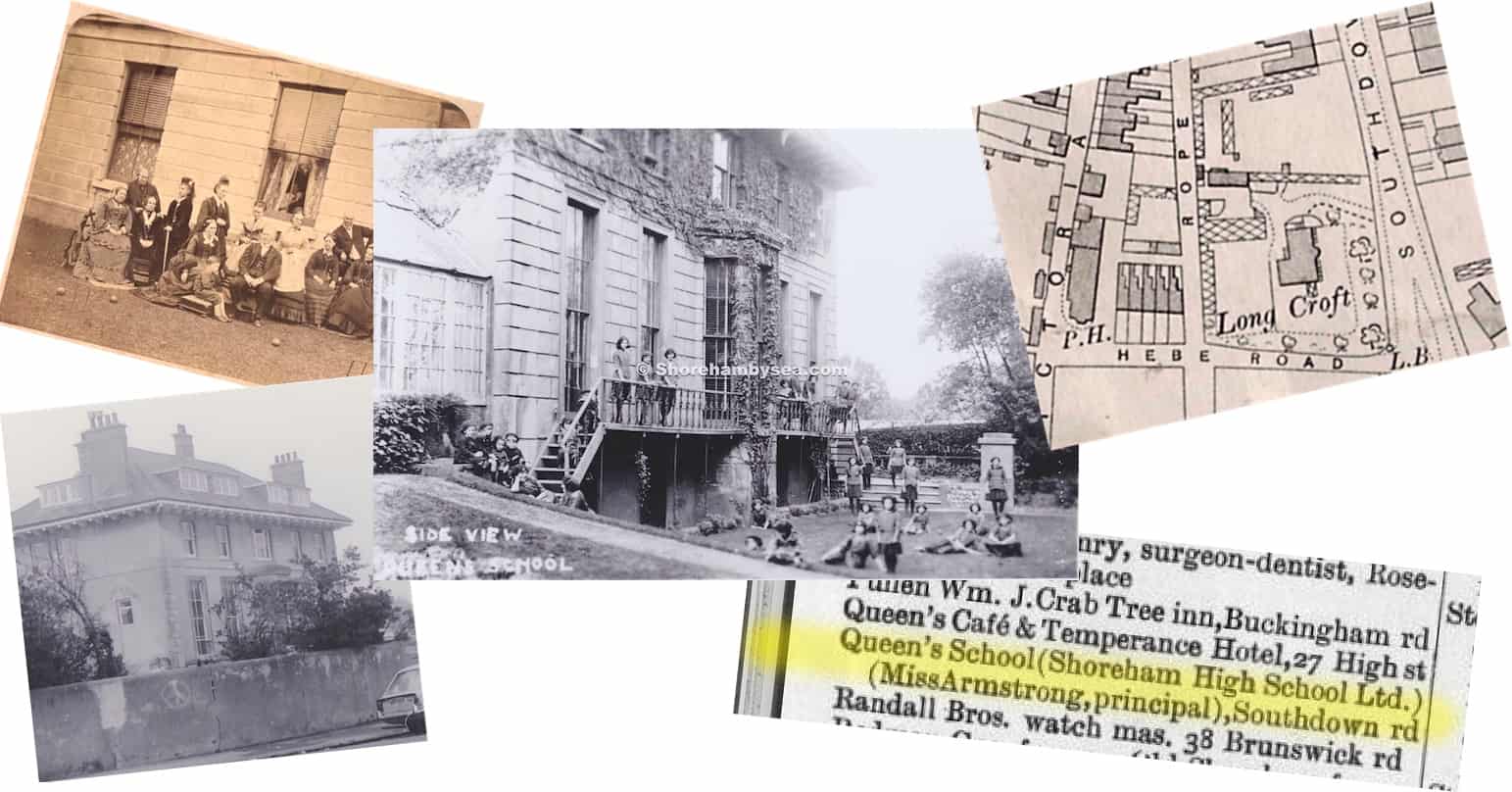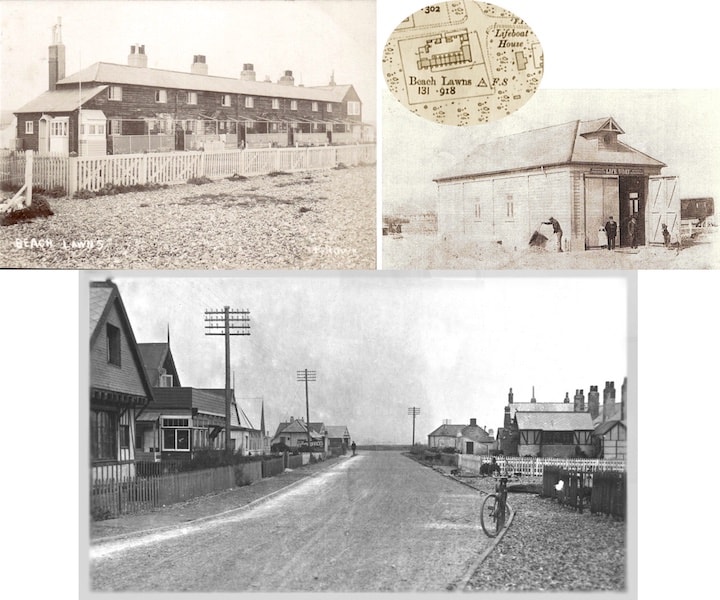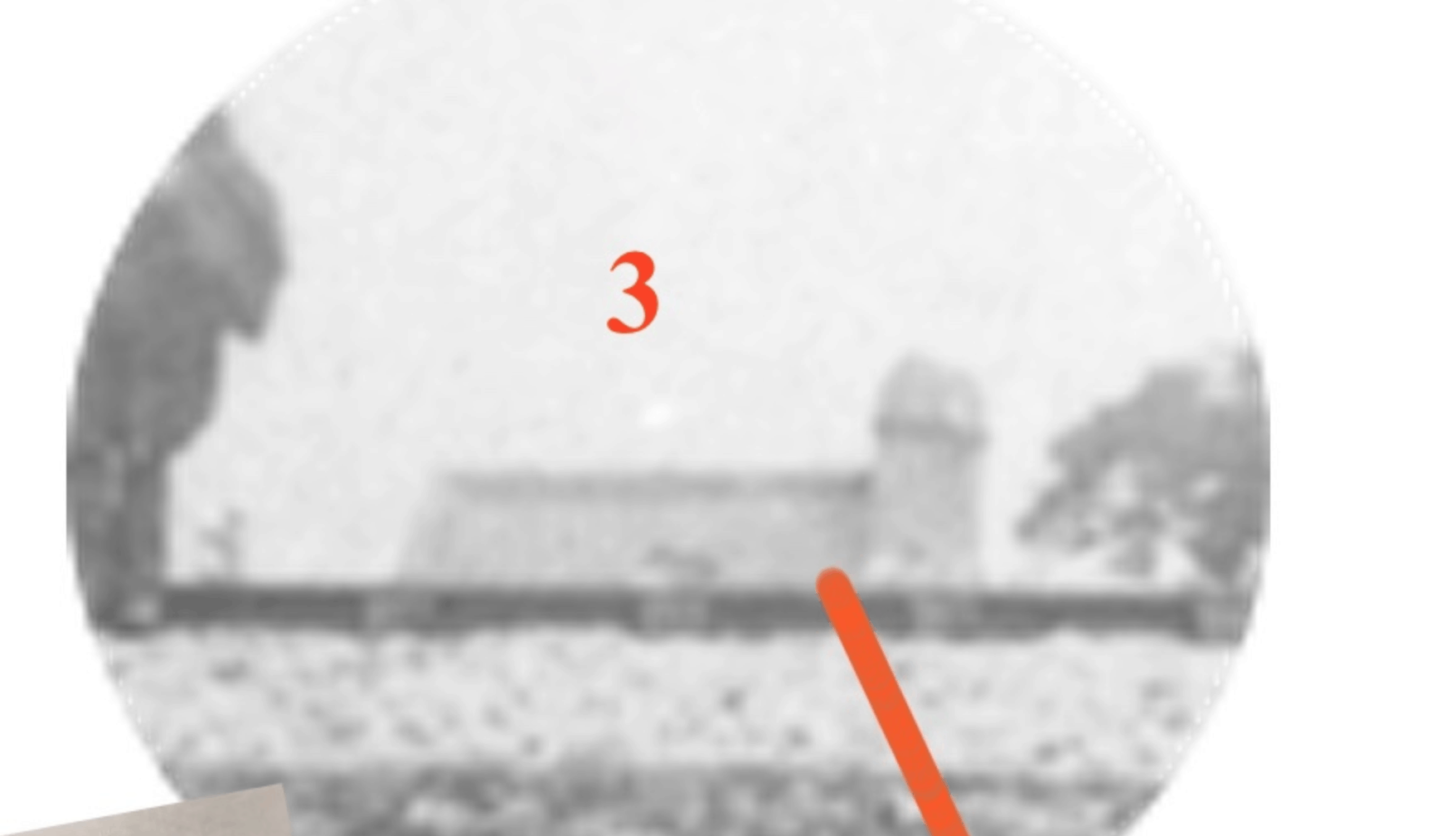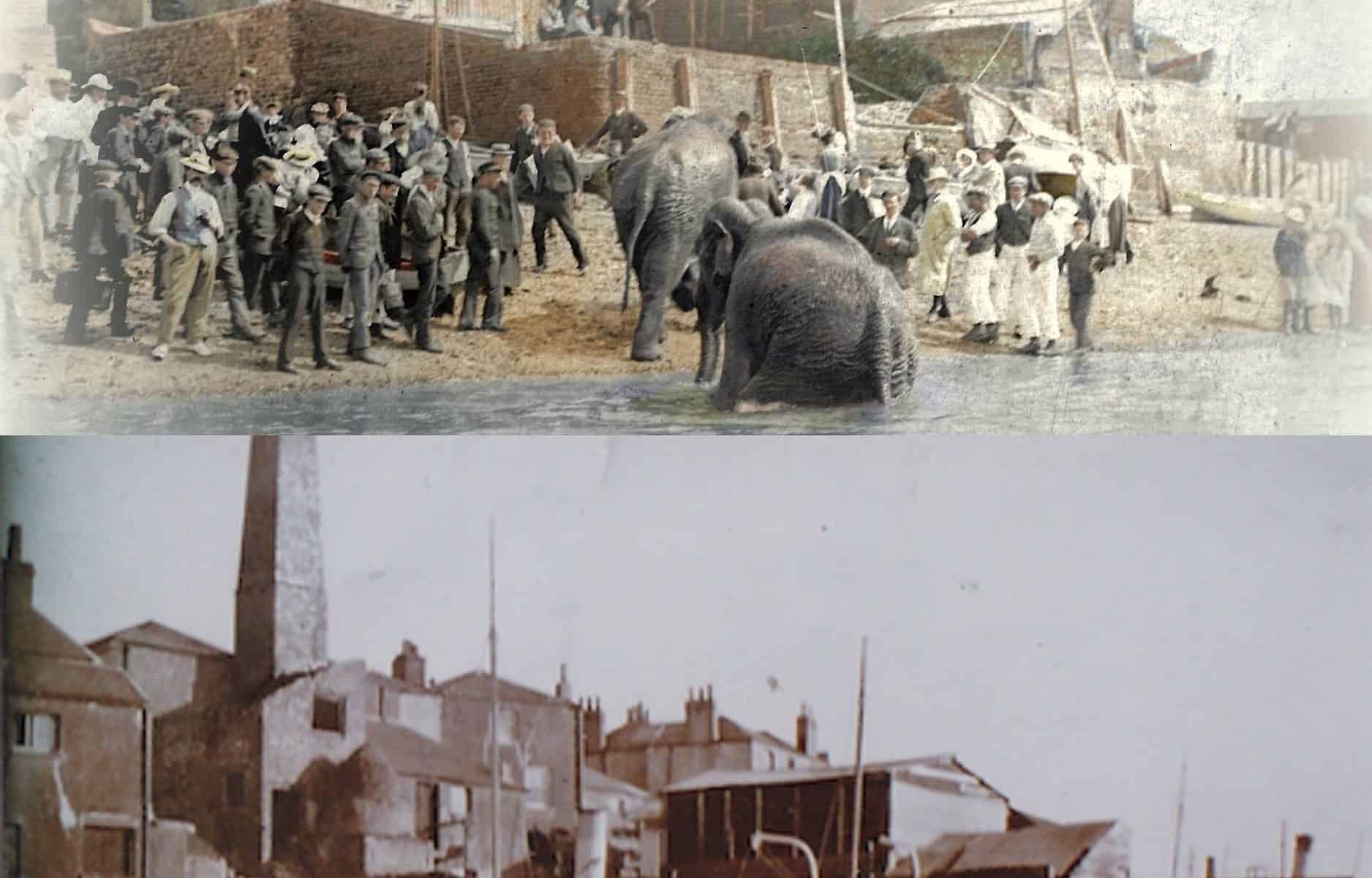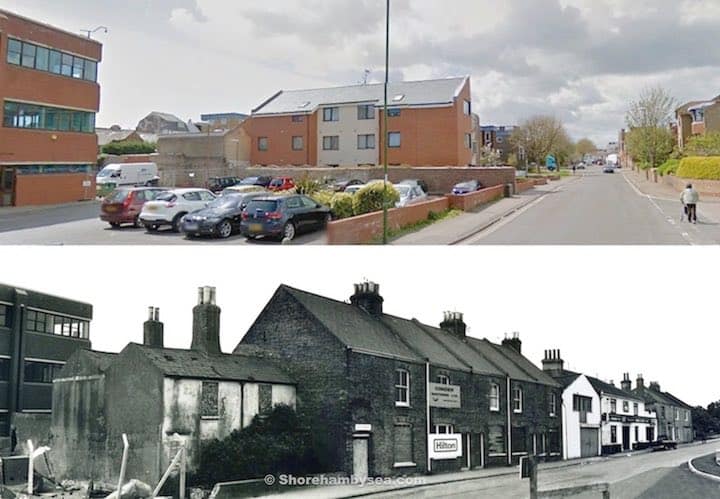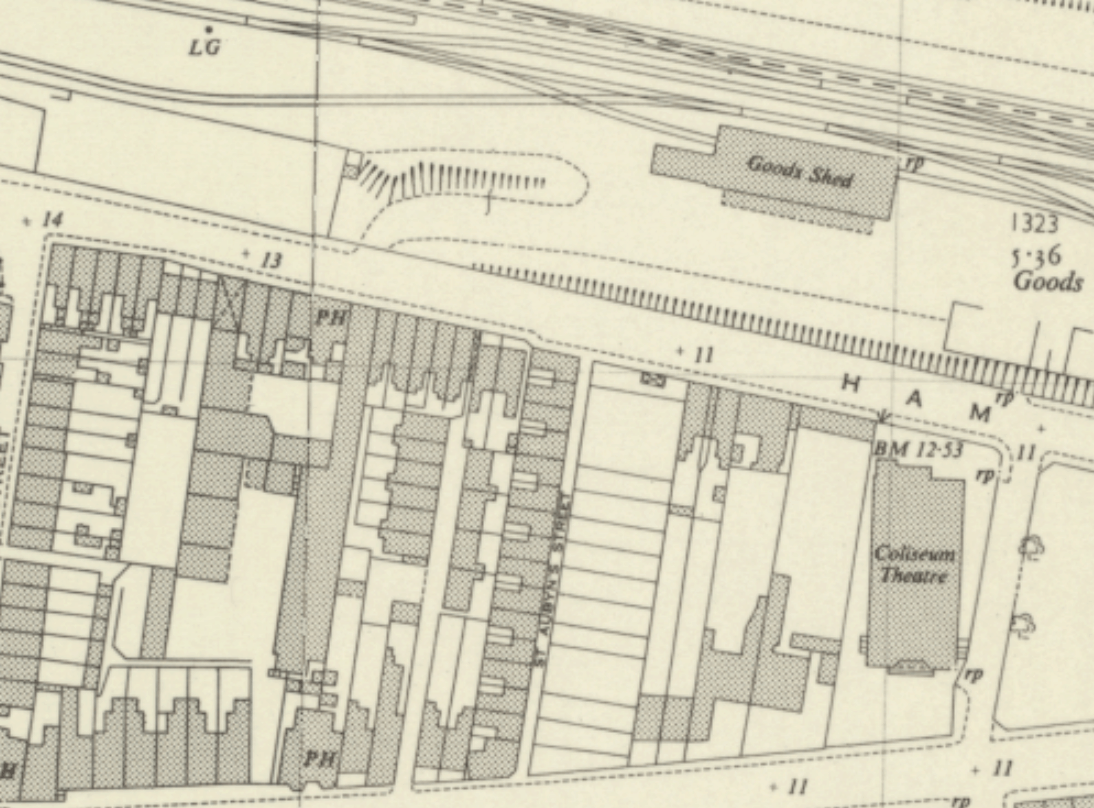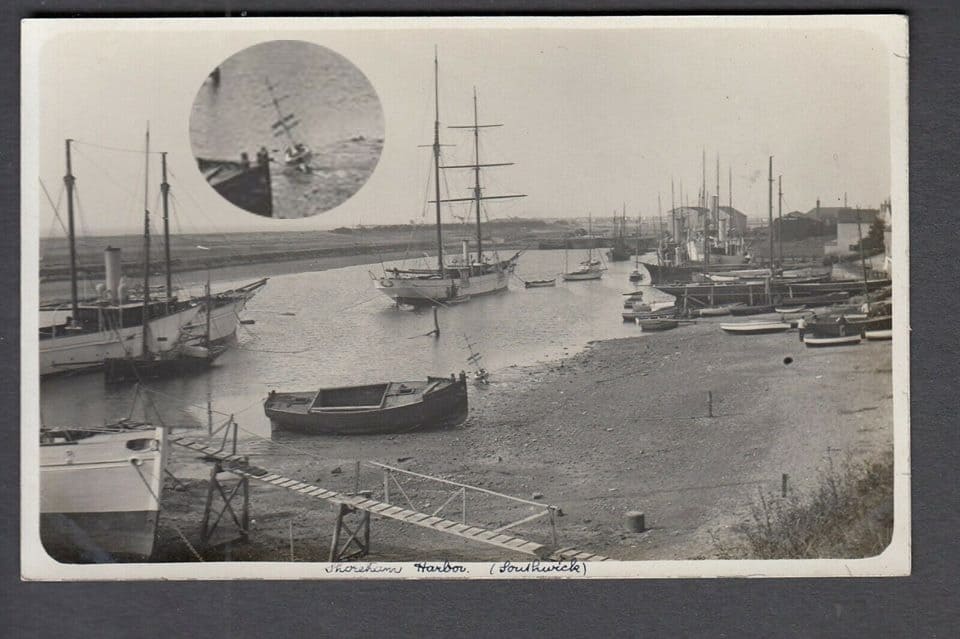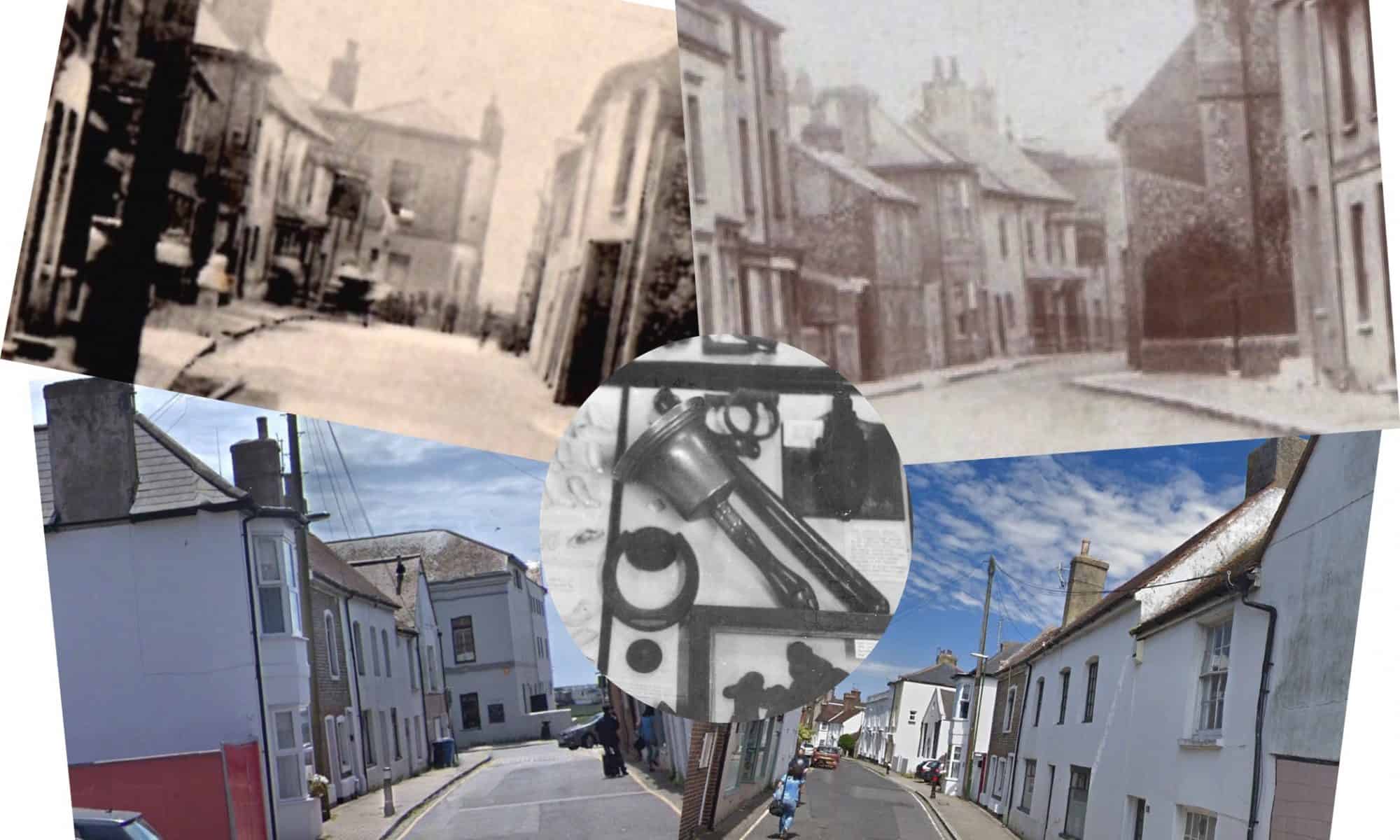…. when newly built. How on earth did those window surrounds hold it up?
Panoramas of Shoreham
– Albion Place looking east to The Duke of Wellington and Tarmount beyond
– The town from the church tower circa 1920. Due to it’s size this has to be a much reduced copy and as yet is not totally finished.
(click on the image to enlarge it )
Longcroft: a history in postcards
J.B.Balley, ship builder and creator of Swiss Gardens built a grand house for himself in Longcroft field on the corner of Hebe and Southdown roads then later sold both to Edward Goodchild (previously landlord of Brunswick Arms) in the early 1860’s. As the main photo shows it became Queens School for girls and appears as such in the directories between 1920 and the start of WW2. The centre bay window column was added after 1898 – the rest of the houses up Southdown Road are out of shot to the right. You can just make out the top of the greenhouse shown on the 1912 map.
Continue reading “Longcroft: a history in postcards”Old Blockade Coastguard cottages
The old Blockade /Coastguard cottages and the lifeboat house stood on the beach at the junction of Beach Road with Ferry Road. The postcard (below) from Howard Porter shows a very unusual rear aspect of it on the right with the lifeboat house just beyond it.
Shoreham’s cliff
We’re told that the inundations of the sea eroded the south east part of the town leaving a small cliff in the New Road area. It’s still there but now totally built over. The front part of the houses on the south side of the road are only two stories high but the backs of them have three.
Swiss Mystery
This 1914 aircraft crash by the Shoreham/Horsham railway line bank shows buildings in the background that are difficult to identify. If the crash site is about point 1 then what is the long building at 2 to the left of the terrace of houses at Buckingham Street? The Swiss Cottage pub roof level may be too low to show above the bank and isn’t as long as that anyway. Was it a still standing building in the Gardens or the newly built, yet to be opened Victoria Road school?
The most likely surviving building is the one at 3 – it looks like two towers on a longish building but to the left of the trees that stood in the grounds of the school, but what was it?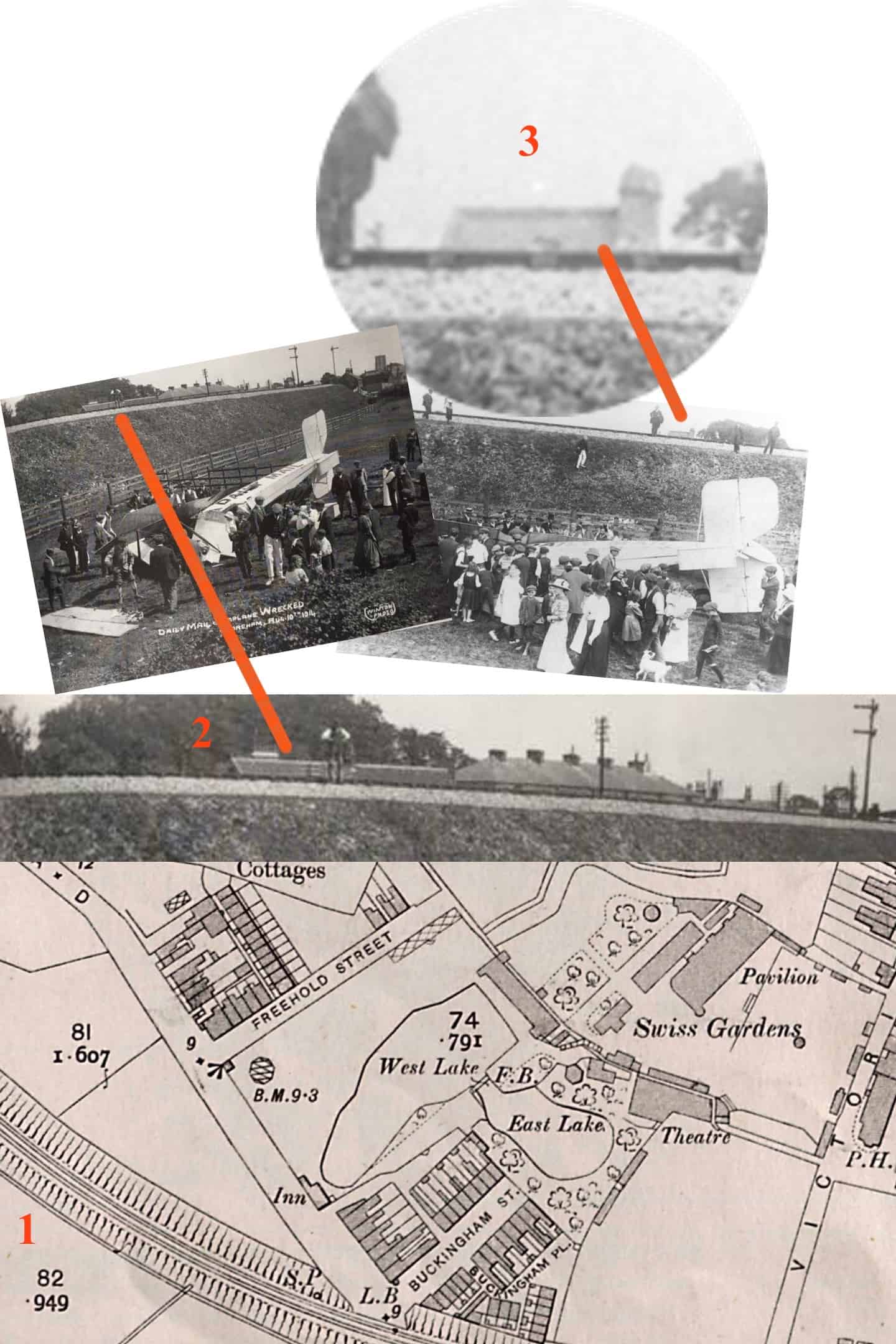
Proboscidea Passing By
Don’t think this has been posted before but it is a very unusual photo of circus elephants enjoying a dip in the river at Star Gap. With thanks to Michael Fox for the elephant photo and Neil De Ville for colouring it – beneath it is one of our own photos showing the same view. Continue reading “Proboscidea Passing By”
Ham Road
Surprise in photographs
Not seen this one before and like many newly found images it includes something unusual left, no doubt temporarily, on the water’s edge. I’ve enlarged the model and it seems to be of a ship, not a yacht.
Crier’s Bell pub
One of Shoreham’s lesser known pubs was The Crier’s Bell in John Street. A substantial, double-fronted building it was given its name by James Chapman, the last official town crier and landlord of the pub in the 1850’s and who’s handbell still survives in the safekeeping of Marlipins Museum.
I’ve never seen a detailed photo of it but have managed to dig up two early 1900’s images from our website. They only show it in the distance but enlarged copies do give more of an idea that surprisingly show two bay windows encroaching on to the pavement and something of an overly large pub sign.
The building still exists albeit without its bay windows.


